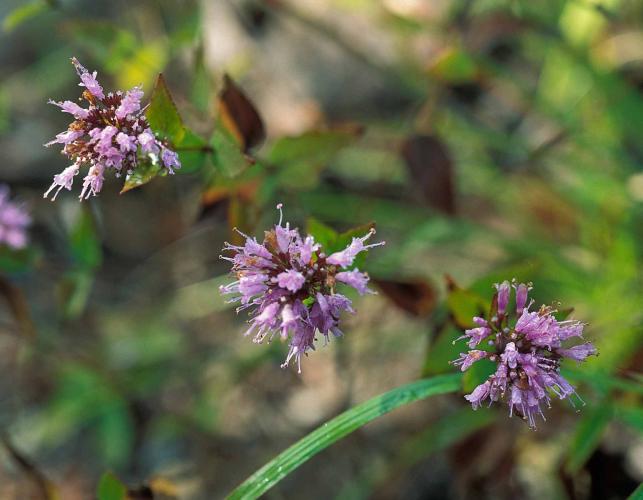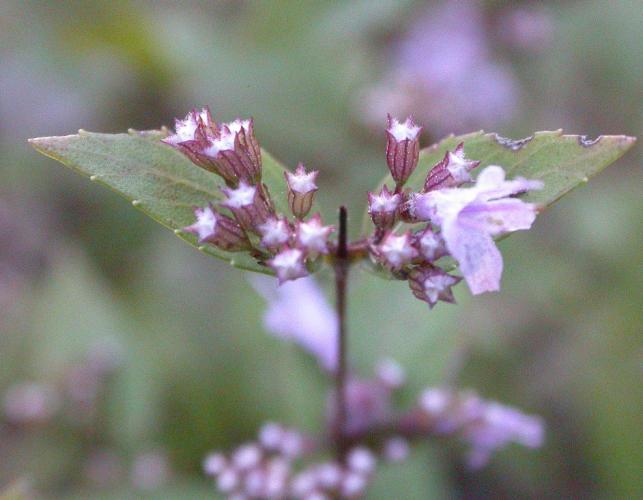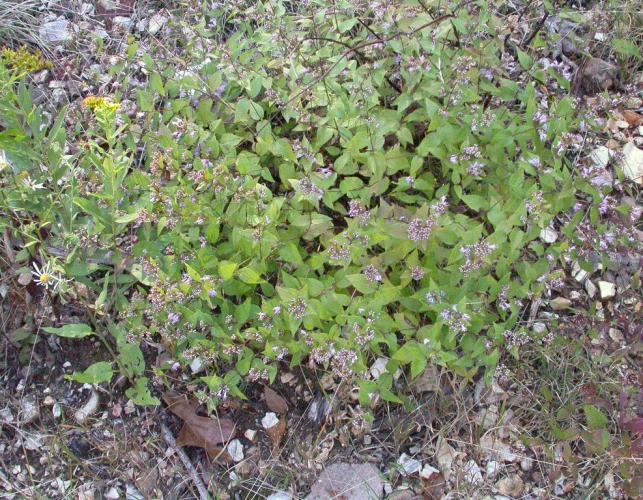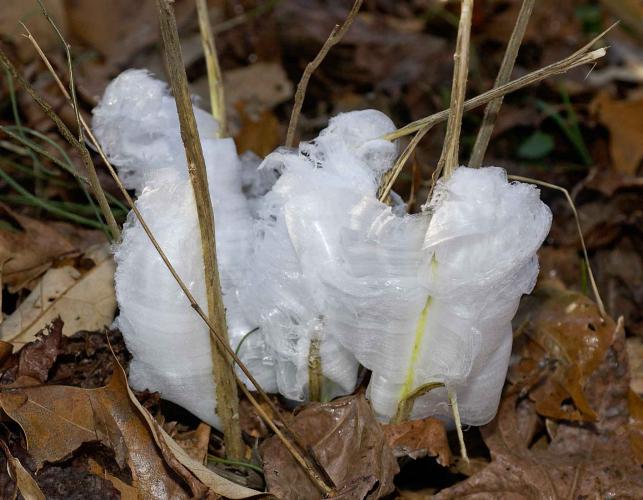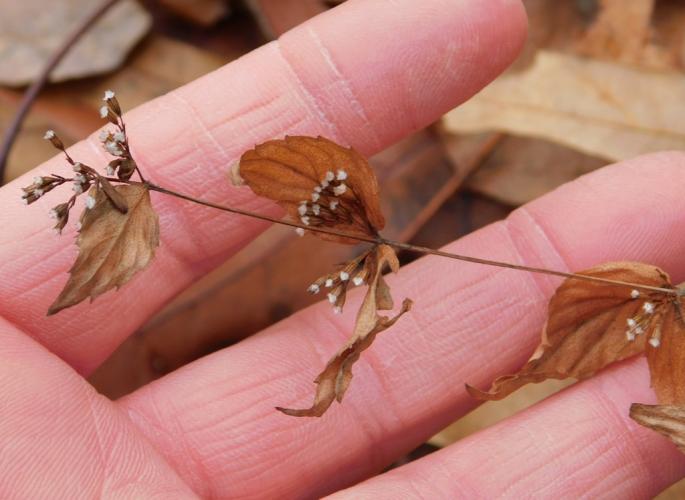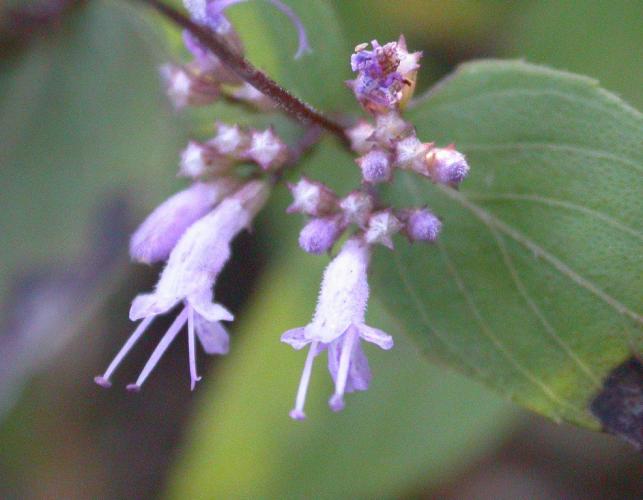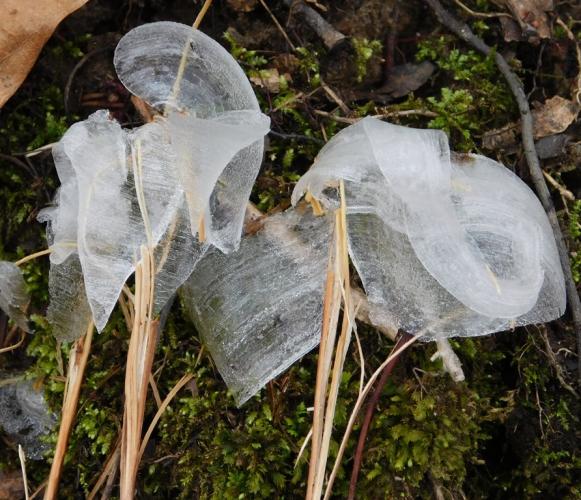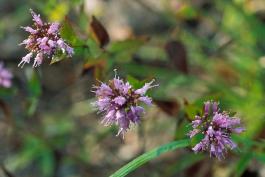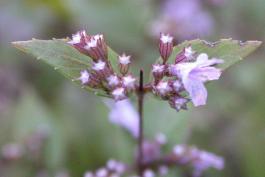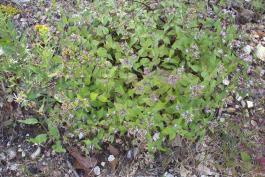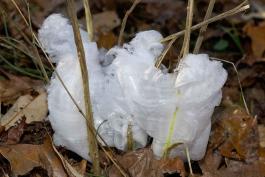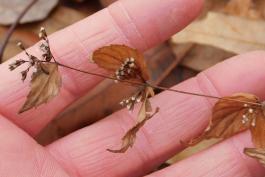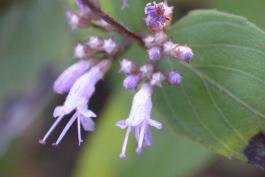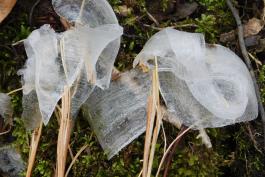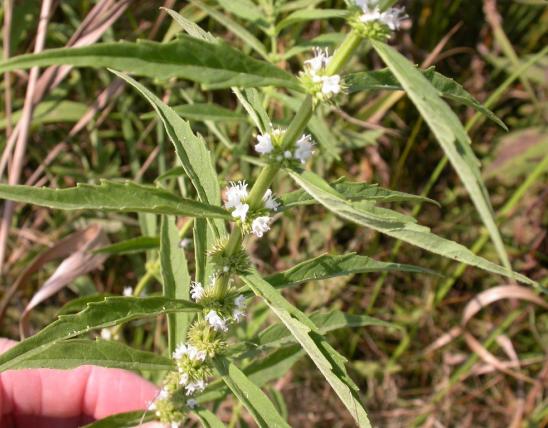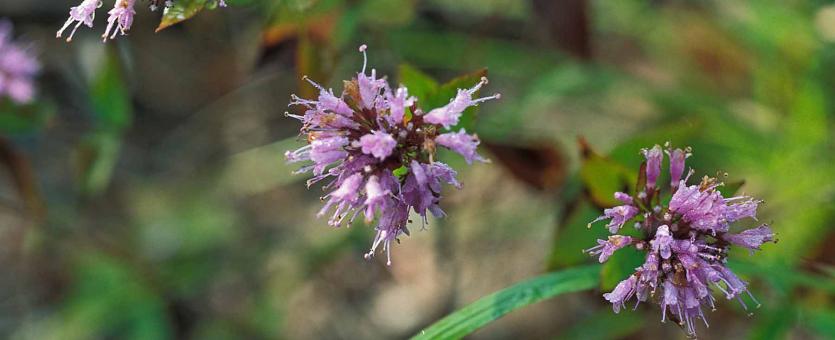
Dittany is a low, much-branched, wiry, shrublike perennial with square stems and aromatic leaves. Flowers are small, in tufts arising from leaf axils, and purple to lavender, each flower with a tiny, 2-lobed upper and a broader 3-lobed lower lip. Blooms July–November. Leaves opposite, sessile, almost triangular with a broad base and a lancelike point, finely toothed. The green parts have a delightful fragrance.
Height: to about 1 foot.
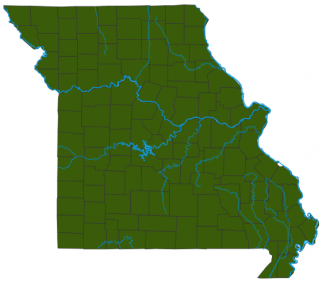
Occurs naturally in southern, central, and east-central counties; cultivated potentially statewide.
Habitat and Conservation
Dittany prefers acid soils on dry, wooded slopes, borders of woods, shaded rights-of-way, and prairies. It is one of the few plants that form “frost flowers.” With the first severe freezes of a winter, and also often later, water in the roots and stems is squeezed out of cracks in the stems and freezes, forming ribbonlike ice of amazing structures, the bands about 2 inches wide in elegant bows. These are visible on cold mornings before the fragile structures melt away.
Human Connections
"Origanoides" means "like oregano," and this plant can be used as a culinary herb and in teas.
"Dittany" is an unusual word, isn't it. It comes from diktamnon, which is the Greek name for a similar mint plant (Origanum dictamnus) native to Crete, where it grows on the Dikti (or Dicte) mountain range.
Dittany can be used as a native garden flower for dry, sunny areas. Its showy flowers attract butterflies. It can spread aggressively, however.
In the past, the leaf tea was used medicinally.
Ecosystem Connections
Butterflies, skippers, bees, and other insects visit the flowers.
The roots of this and hundreds of other plants help hold the soil on wooded slopes, preventing our heavy Ozark rain showers from eroding the land.
